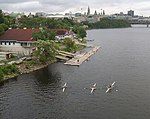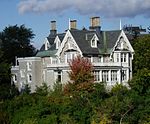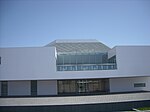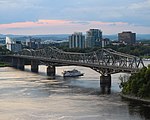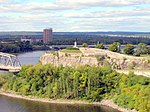Macdonald-Cartier Bridge
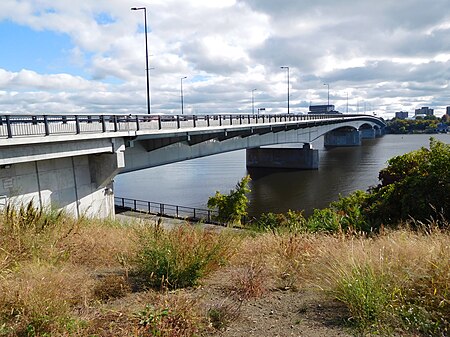
The Macdonald-Cartier Bridge (French: Pont Macdonald-Cartier) is a bridge connecting Ottawa, Ontario, to Gatineau, Quebec. The bridge is a 618 m long continuous steel box girder bridge and carries six lanes of traffic. It links King Edward Avenue and Sussex Drive in Ottawa with Autoroute 5 in Quebec. It is the easternmost bridge linking Ottawa to Gatineau, running just east of the Alexandra Bridge. The bridge was built from 1963 to 1965 by the federal government and the governments of the two provinces. It is owned and maintained by Public Works and Government Services Canada. It was named after John A. Macdonald and George-Étienne Cartier, joint premiers of the Province of Canada, and the name is representative of the link between French and English Canada. There are sidewalks on both sides of the bridge intended for use by pedestrians and cyclists. Immediately after the bridge on the Gatineau side, the road becomes part of the Autoroute where cyclists and pedestrians are prohibited. However, they can then use paths leading to Laurier Street. The Ottawa side was to connect with Vanier Parkway, and some piers where it would cross the Rideau River remain from the Canadian Pacific Railway's Sussex Street Subdivision, but this was cancelled because the route would have taken much of New Edinburgh Park. Instead, King Edward Avenue was widened up to the one-way pair of St. Patrick Street and Murray Street to the St. Patrick Street Bridge over the Rideau River, which connects with the north end of Vanier Parkway. This provides a four-lane connection between the bridge and Highway 417. Construction is now underway to realign the entrance ramps on the Ontario side, removing any possibility of further extensions.
Excerpt from the Wikipedia article Macdonald-Cartier Bridge (License: CC BY-SA 3.0, Authors, Images).Macdonald-Cartier Bridge
Macdonald-Cartier Bridge, Gatineau Hull (Rideau-Vanier)
Geographical coordinates (GPS) Address External links Nearby Places Show on map
Geographical coordinates (GPS)
| Latitude | Longitude |
|---|---|
| N 45.436666666667 ° | E -75.7025 ° |
Address
Pont Macdonald-Cartier Bridge
Macdonald-Cartier Bridge
J8X 3T8 Gatineau, Hull (Rideau-Vanier)
Quebec, Canada
Open on Google Maps
